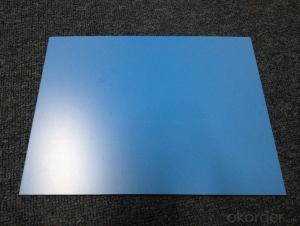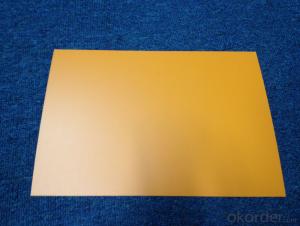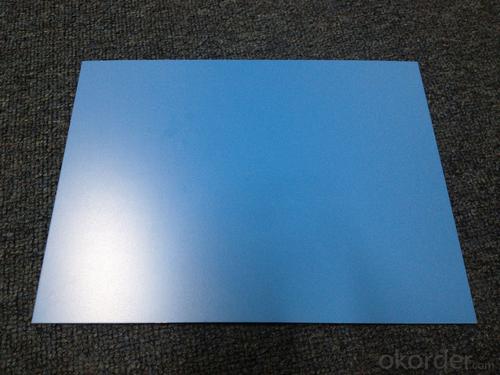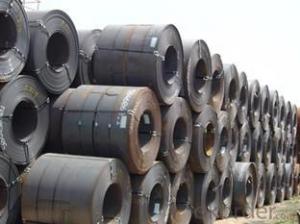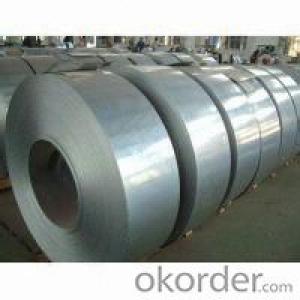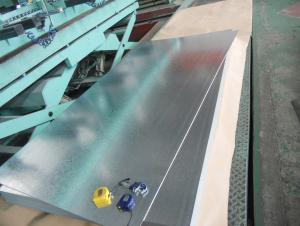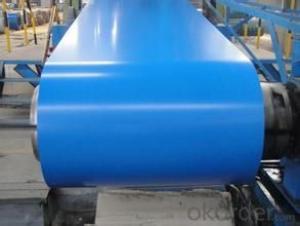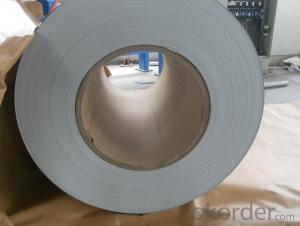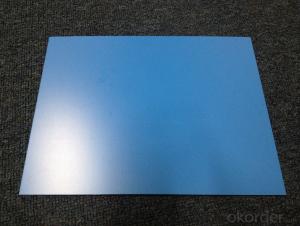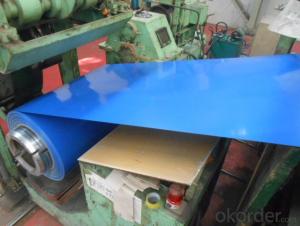JCPRE-PAINTED GALVANIZED STEEL SHEET
- Loading Port:
- Tianjin
- Payment Terms:
- TT OR LC
- Min Order Qty:
- -
- Supply Capability:
- 8000 m.t./month
OKorder Service Pledge
Quality Product, Order Online Tracking, Timely Delivery
OKorder Financial Service
Credit Rating, Credit Services, Credit Purchasing
You Might Also Like
THICKNESS:0.18mm-1.5mm
WIDTH:900mm-1250mm
COATING MASS:Z30-Z275
PAINT:PE、HP、HDP、PVDF、SMP、MATT、PVDF
COLOR:RAL Scale
COIL INNER DIAMETER:508mm/610mm
COIL WEIGHT:3mt-7mt
BASE MATERIAL:Hot-dip GALVANIZED Steel
- Q: Are steel sheets suitable for railway infrastructure?
- Yes, steel sheets are suitable for railway infrastructure due to their high strength, durability, and resistance to wear and tear. Steel sheets are often used for railway track components such as rails, sleepers, and bridges, as they can withstand heavy loads and provide stability to the railway system. Additionally, steel sheets can be easily fabricated and maintained, making them an ideal choice for railway construction projects.
- Q: What is the difference between a perforated and woven steel sheet?
- A perforated steel sheet is a metal sheet that has been punched with a pattern of holes, allowing for ventilation, drainage, or visibility. On the other hand, a woven steel sheet is a mesh-like structure created by interweaving individual steel wires, providing strength, filtration, or screening capabilities. The main difference lies in the manufacturing process and the resulting design, with perforated sheets having distinct punched holes and woven sheets having a continuous mesh pattern.
- Q: Are steel sheets suitable for architectural roofing?
- Yes, steel sheets are suitable for architectural roofing. Steel sheets offer durability, strength, and longevity, making them a popular choice for architectural roofing applications. They can withstand harsh weather conditions, provide excellent protection against elements like rain, snow, and sunlight, and are available in a variety of designs and finishes to enhance the aesthetic appeal of a building. Additionally, steel sheets are lightweight, which reduces the overall load on the structure, and they are also fire-resistant, making them a reliable choice for architectural roofing.
- Q: What are the common thicknesses for aluminum-coated steel sheets?
- The common thicknesses for aluminum-coated steel sheets range from 0.015 inches to 0.125 inches.
- Q: Are steel sheets suitable for food-grade applications?
- No, steel sheets are generally not suitable for food-grade applications as they can potentially leach harmful substances into the food.
- Q: What are the different surface treatments available for steel sheets?
- There are several surface treatments available for steel sheets, including galvanizing, electroplating, powder coating, and painting.
- Q: Can steel sheets be galvanized?
- Yes, steel sheets can be galvanized. Galvanizing is a process of applying a protective zinc coating to steel to prevent corrosion, and it can be done on steel sheets as well.
- Q: What is the process of stamping designs on steel sheets?
- The process of stamping designs on steel sheets involves the use of a die and a press machine. The steel sheet is placed between the die, which contains the desired design, and the press machine exerts force to transfer the design onto the sheet. This process creates a permanent impression of the design on the steel sheet.
- Q: Can the steel sheets be easily welded?
- Yes, steel sheets can be easily welded. Welding is a common method used to join steel sheets together. The process involves melting the edges of the steel sheets and then allowing them to cool and solidify, creating a strong bond. However, it is important to note that the ease of welding can depend on the type and thickness of the steel sheets, as well as the skill and experience of the welder. Additionally, proper safety precautions and welding techniques should be followed to ensure a successful and safe welding process.
- Q: Can 16Mn steel plate be used instead of Q345D steel plate?
- If the use of Q345D instead of using 16Mn, that can be, but 16Mn instead of Q345D can not, and also can not buy 16Mn steel now, that is the old number, and the latest brand is Q345A
Send your message to us
JCPRE-PAINTED GALVANIZED STEEL SHEET
- Loading Port:
- Tianjin
- Payment Terms:
- TT OR LC
- Min Order Qty:
- -
- Supply Capability:
- 8000 m.t./month
OKorder Service Pledge
Quality Product, Order Online Tracking, Timely Delivery
OKorder Financial Service
Credit Rating, Credit Services, Credit Purchasing
Similar products
Hot products
Hot Searches
Related keywords
